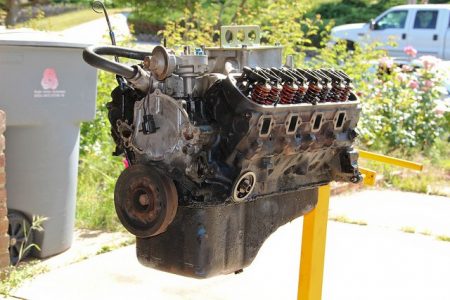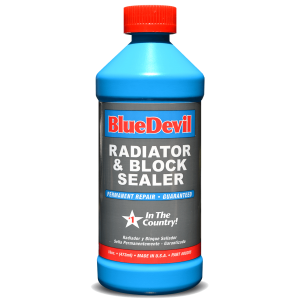How To Fix A Cracked Copper Pipe Without Replacing It
 Having a cracked engine block can feel like the end of your vehicle's life. Engine swaps can be extremely expensive and often not worth the investment in your current vehicle. Also, having a cracked block is one of those extreme cases where it may not be possible to salvage your current engine.
Having a cracked engine block can feel like the end of your vehicle's life. Engine swaps can be extremely expensive and often not worth the investment in your current vehicle. Also, having a cracked block is one of those extreme cases where it may not be possible to salvage your current engine.
There are many who have attempted to repair cracked blocks. The main difficult is that you cannot simply weld an engine block since it is made from cast iron, not steel. It is possible to weld cast iron using an arc welder and the proper welding rods, but that often can cause deformation to your engine block, or leave the welded area far more brittle and susceptible to further cracking. The other common attempt at fixing a cracked block is called cold metal stitching. This process is similar to sewing two pieces of fabric together, except it is far more difficult with metal. The main difficulty with this process is that it does not work well on components that experience drastic temperature changes as the temperature change causes swelling and shrinking of the metal which will cause the metal stitching to tear and the crack to reopen. This process is also often prohibitively expensive and only used on very large or expensive motors such as heavy equipment, diesel engines or marine motors.
There have been a variety of other attempts at sealing cracked engine blocks like using cold welding products, 2 part epoxies or a variety of other patches and fixes. The problem in most cases is the same as with cold metal stitching in that the wide range of operating temperatures in your vehicle's motor along with the thermal expansion of the metal cause most repairs to only last for a short time.
Before you attempt any repair on your cracked engine block, you want to be sure that is the problem you have. If you have an external crack in your block that you can see, then the problem is easily identified. If you have an internal crack the symptoms can often be similar to that of a blown head gasket. To determine if you have a blown head gasket, you can read our article about the symptoms of a blown head gasket.
The best way to seal a cracked block is to use BlueDevil Radiator and Block Sealer. BlueDevil Radiator and Block Sealer is a specially formulated sealing agent that you add to your vehicle's cooling system. BlueDevil Radiator and Block Sealer can seal your cracked block from the inside out through your vehicle's cooling system. It is not a fibrous or particulate sealer that can harm or clog any other areas of your cooling system. Instead, BlueDevil Radiator and Block Sealer has a special chemical formula that will bond to the metal in your engine block at the leak point until the leak is completely sealed. The chemical weld formed by BlueDevil Radiator and Block Sealer will create a permanent seal that can expand and contract with the temperature changes in your engine. Since there is nothing harmful in BlueDevil Radiator and Block Sealer it can stay in your cooling system indefinitely sealing any future leaks your may have in your vehicle's radiator or engine block.

BlueDevil Radiator and Block sealer works so well, it comes with a guarantee of performance. If you purchase it from BlueDevil or one of our partnering local auto parts stores we guarantee a permanent repair!
Since you've got nothing to lose, pick up BlueDevil Radiator and Block Sealer today! You can purchase it directly from BlueDevil here.
Pictures provided by:
Cracked Block – By Nick Ares – Licensed by Creative Commons Share Alike 3.0 Via Flikr – Original Link
253 responses to "Repairing Your Cracked Engine Block"
How To Fix A Cracked Copper Pipe Without Replacing It
Source: https://gobdp.com/blog/repairing-cracked-engine-block/
Posted by: ornelasevines43.blogspot.com

0 Response to "How To Fix A Cracked Copper Pipe Without Replacing It"
Post a Comment